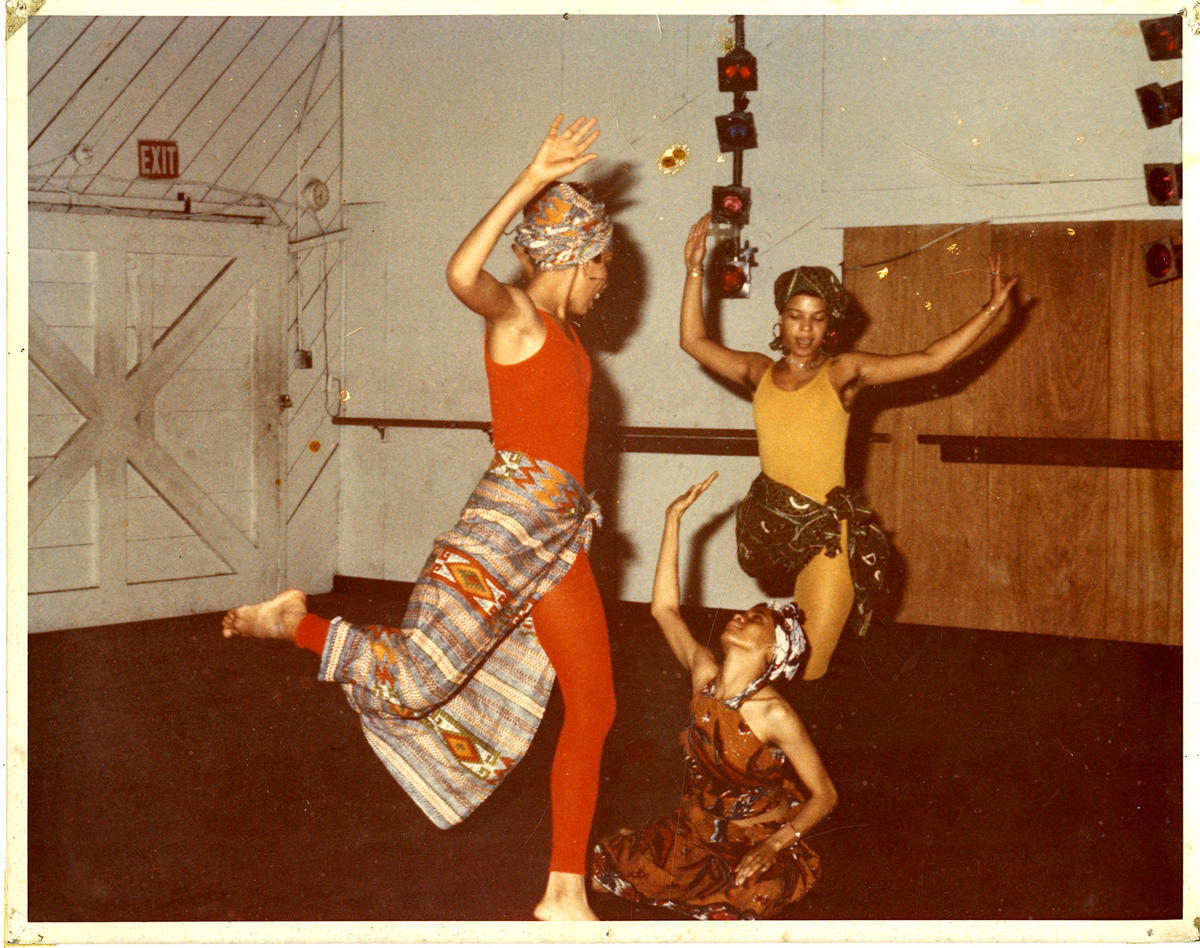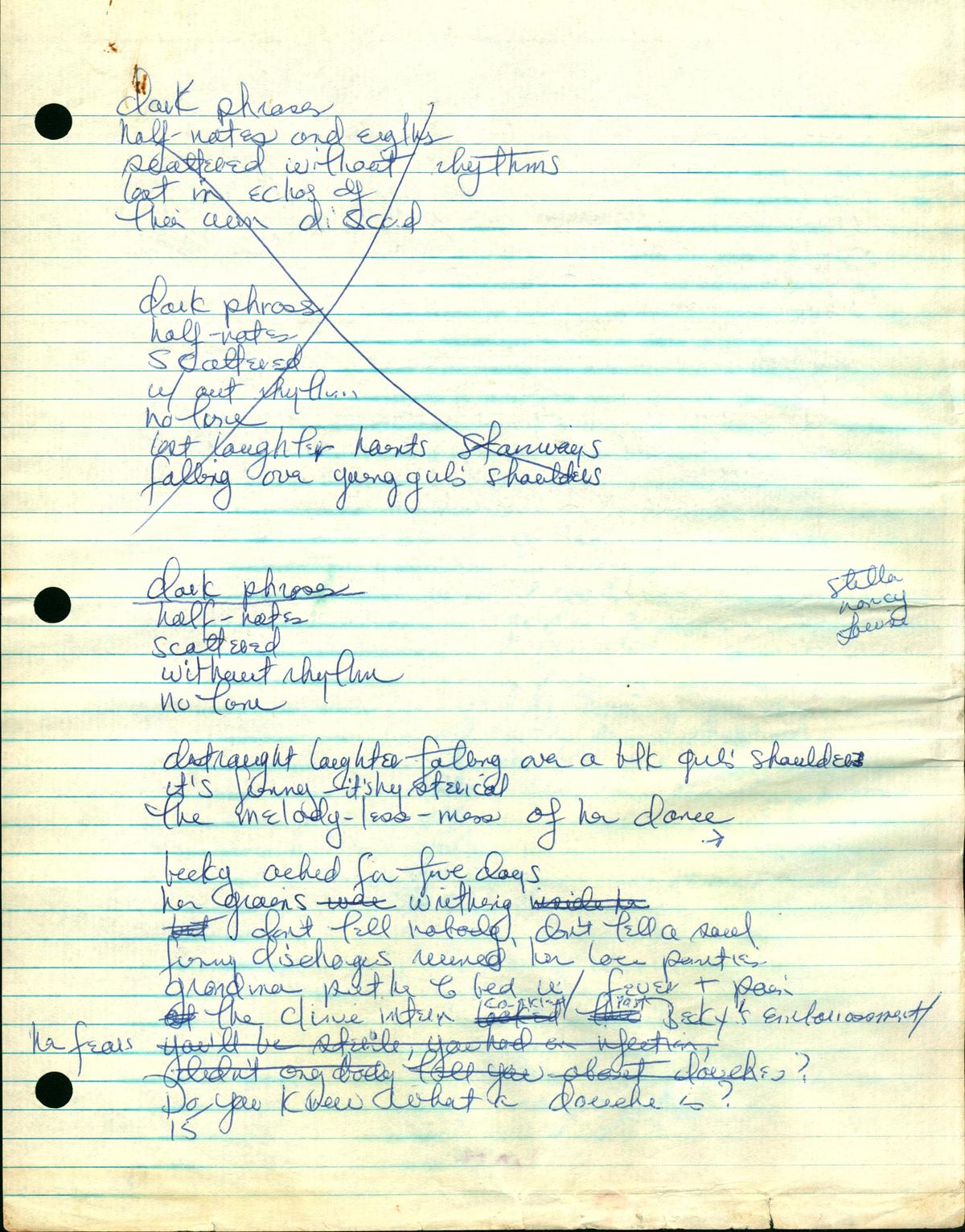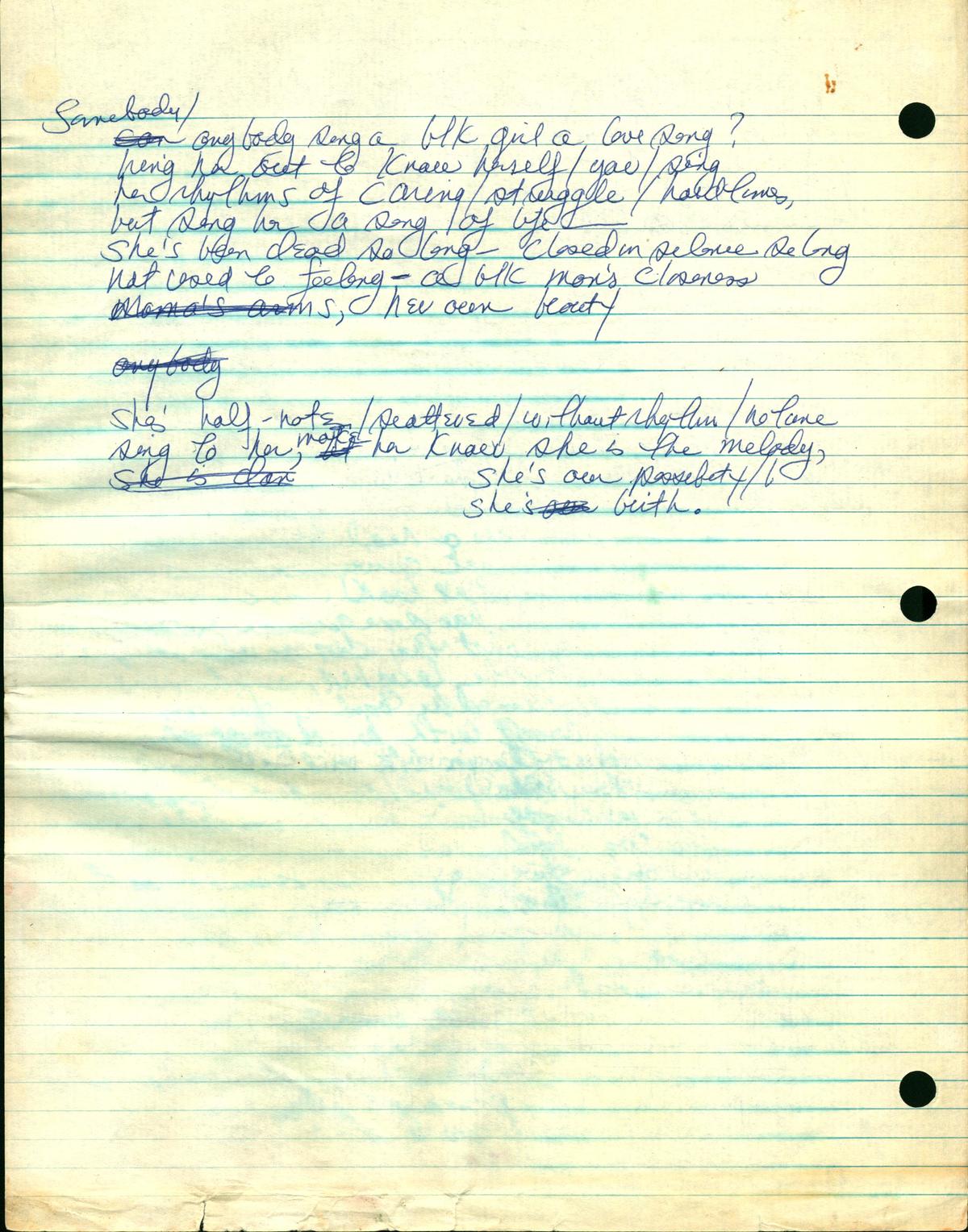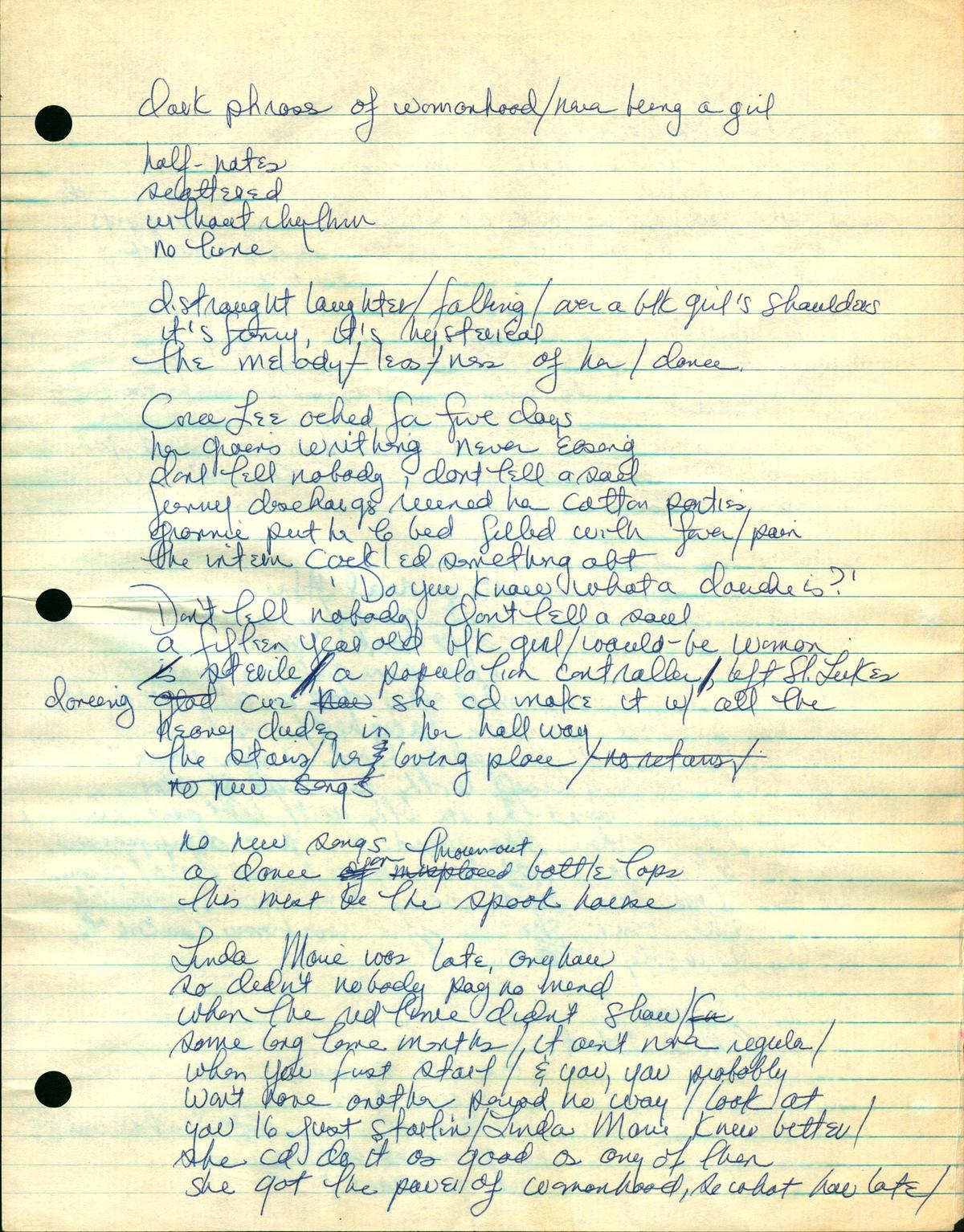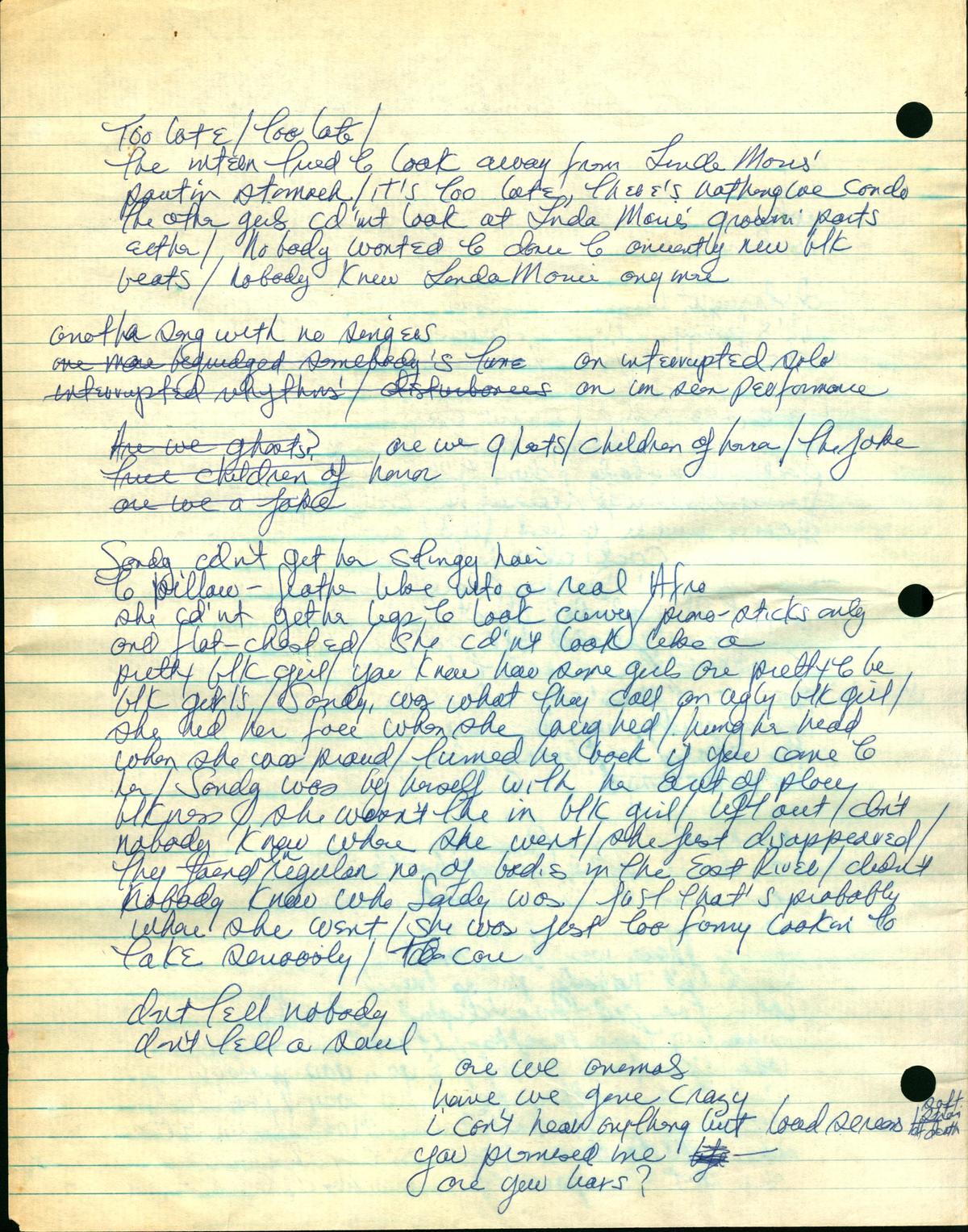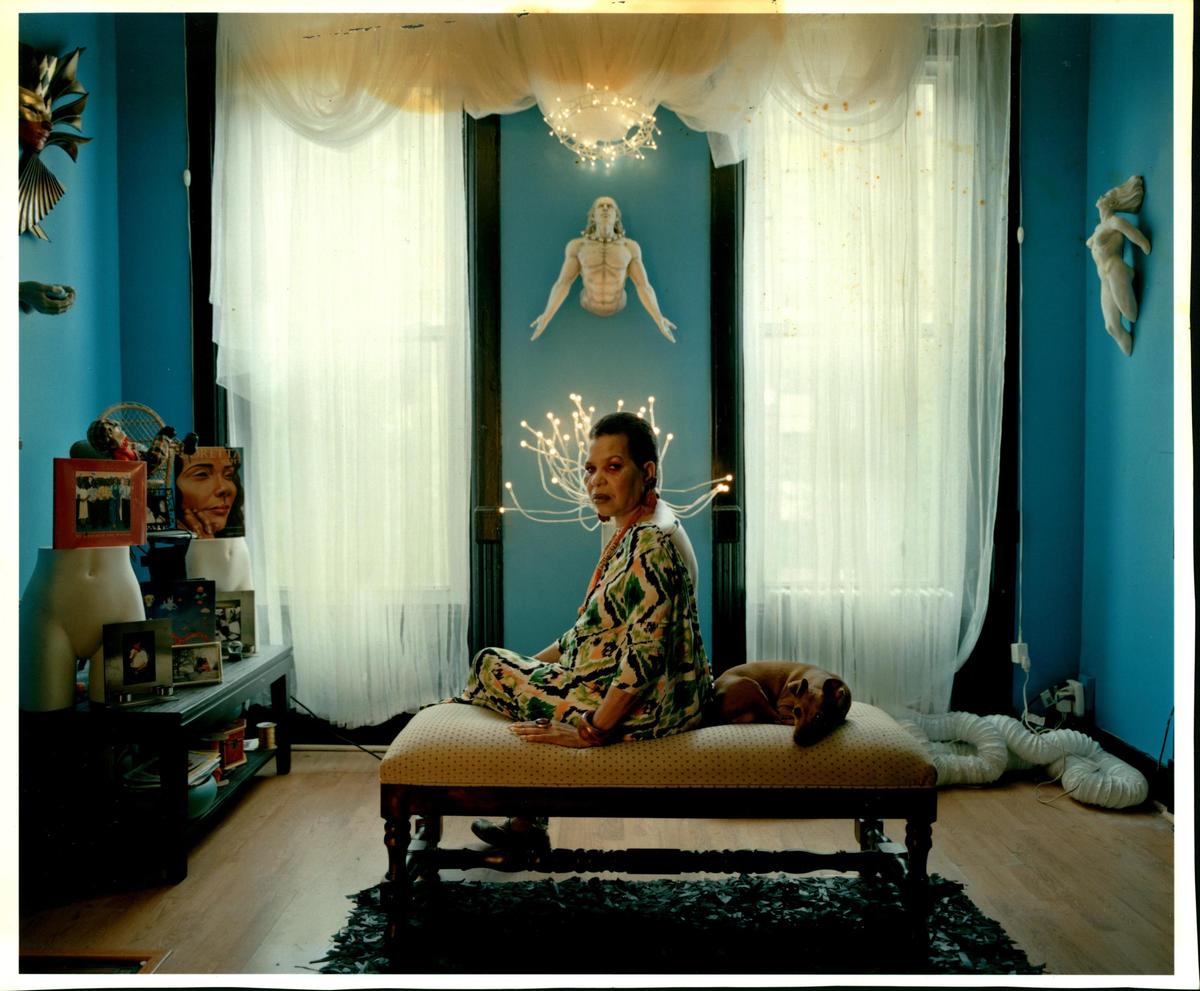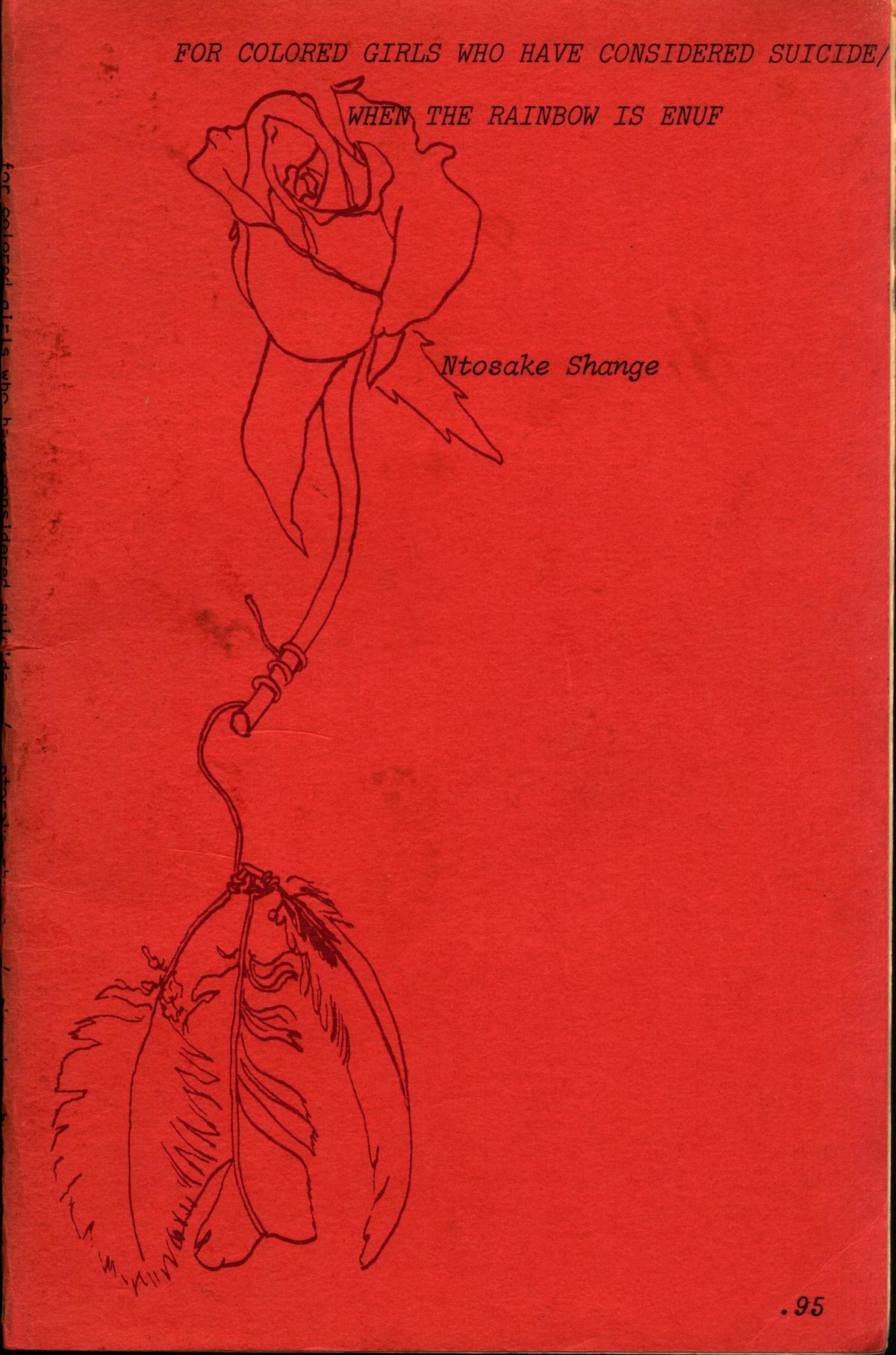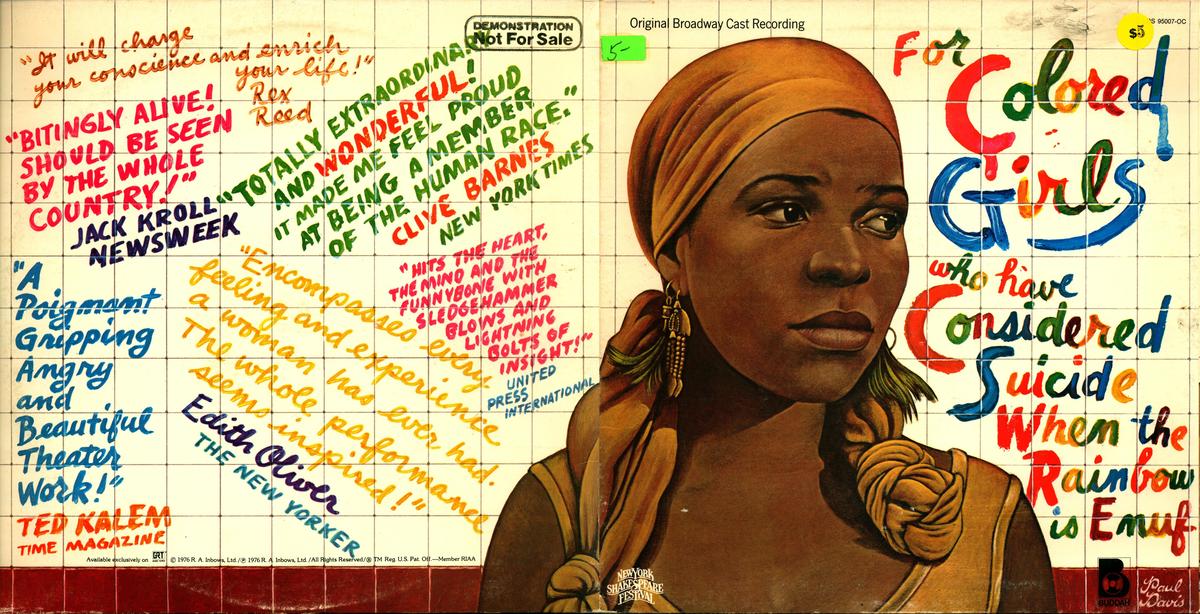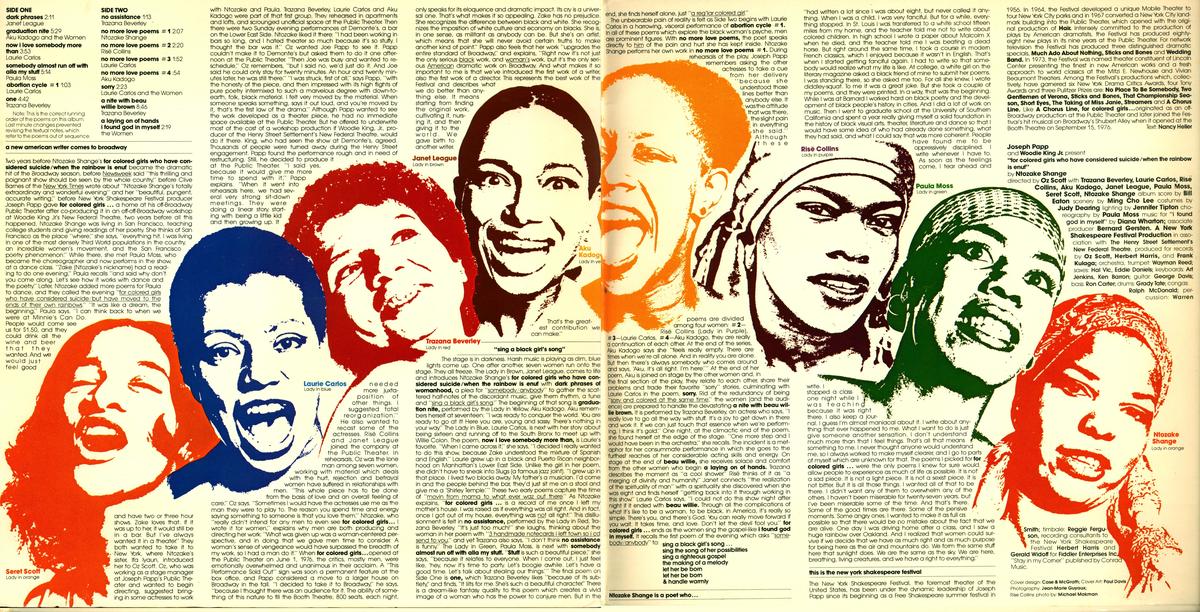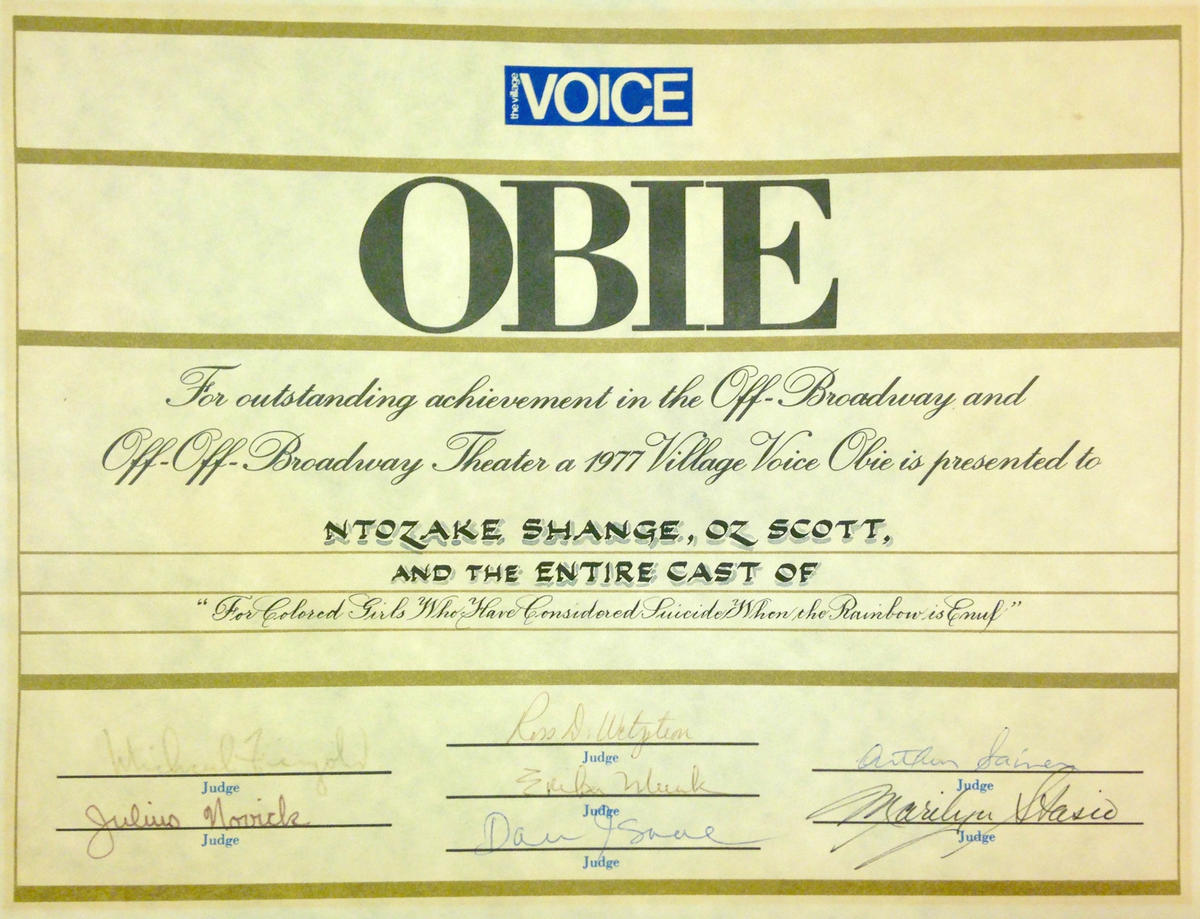STUFF
STUFF: a celebration of Ntozake Shange's for colored girls
Go to section: Exhibit Details | Exhibited Archival Materials | The Magic of Ntozake Shange | Installation Timelapse | Artist and Curator Bios | Take Action | we found ourselves: a curatorialpoem by Souleo | STUFF Playlist
Exhibit Details
September 8, 2020 - August 16, 2021
Milstein Center, Barnard College
Artwork by Dianne Smith, curated by Souleo
hey man/ where are you goin wid alla my stuff/
this is a woman’s trip & i need my stuff/
-somebody almost walked off wid alla my stuff, lady in green
STUFF is a multimedia installation celebrating Ntozake Shange’s groundbreaking choreopoem, for colored girls who have considered suicide/when the rainbow is enuf.
Since its debut performance in 1974 just outside Berkeley, California, at a bar named the Bacchanal, Shange’s work has captivated, provoked, inspired and transformed audiences all over the world. To bring the choreopoem’s themes to visual life is a specially commissioned piece by artist Dianne Smith in honor of one of the poems from the text, somebody almost walked off wid alla my stuff performed by the character known as the lady in green.
In this multimedia installation, the “stuff” that the lady in green feels is being stripped away from her is represented in both the literal and allegorical sense. According to Smith, “this work bears witness to a lived experience. It is a journey of unpacking and understanding the symbolic and metaphorical references in our own lives made by the lady in green. The question that comes to mind almost immediately upon hearing, reading and visualizing her words is what does she mean by stuff? I realize that she is talking about a gender and racially biased society robbing her, a black woman; stealing from her, taking the essence of her. Pillaging from her mind, body, and soul, trying to steal all her joys and memories.” Smith continues: “this theft isn’t necessarily a conscious act by the aggressor, but it’s a theft nonetheless! Thus, the lady in green uses her voice, taking agency to demand alla her stuff back!”
In this light, we can view Smith’s abstract paper and sculptural installation as a shrine or sanctuary for the lady in green and as a site of reflection, healing, and reclamation. Enhancing this work are three new media pieces that depict the artist’s experience with domestic violence, share the personal stories of several women who have had “stuff” taken from them, and visually captures “stuff” within the artist’s studio that shapes her creative practice.
Placed in a regal position overlooking the installation are seven wooden mannequin heads adorned in African fabric. Each figure represents the lady in green in varying forms as well as the women captured in the new media works. Thereby, lady in green’s story becomes one that represents the experiences of countless women who are taking back the joy, the power, and the peace that belongs to them.
Finally, anchoring the exhibition is archival material from the Ntozake Shange Papers at the Barnard Archives and Special Collections that traces the journey of Shange’s text from that bar in California to its critically acclaimed run on Broadway, which included a 1977 Tony Award nomination for Best Play and a 1977 Tony Award win for Best Performance by an Actress in a Featured Role in a Play (Trezana Beverley).
Exhibit Context and the Shange Magic Project
Initially conceptualized and celebrated as a feminist rallying cry against misogyny, gender inequality, racism, Shange’s for colored girls... has reverberated outside of her immediate targeted audience of women of color to impact the lives of individuals across lines of gender, race, class, and sexuality. The text’s central focus on the human condition—whether falling in and out of love, finding security within one’s identity and culture, or one demanding respect for all of their “stuff”—is a universal theme. Shange has delivered the message in a tone and manner so true to the human experience that the words shared woman-to-woman have echoed out into the world serving as a source of strength and inspiration for all. Indeed, the text itself has been reimagined numerous times internationally from Paris to Brazil. Incarnations have included an all-male cast, a production by an all-white theatre company, and a location change with the story set in prison cell blocks. Furthermore the text remains a staple in the world of academia and used in classes on women’s studies, gender, sexuality, and race.
STUFF originally debuted in the i found god in myself exhibition in 2014 at the Schomburg Center for Research in Black Culture in Harlem, NY. The exhibition was part of a multi-venue experience with satellite projects hosted by Long Gallery Harlem (formerly The Sol Studio) and La Maison d’Art.
The installation of Dianne Smith’s STUFF in the Milstein lobby is a part of the Shange Magic Project, a series of events and experiences that celebrates Ntozake Shange’s life and legacy, organized by Barnard’s Africana Studies Program and the Barnard Library and Academic Information Services, taking place over two years from Fall 2019 through Spring 2021. Events in the Shange Magic Project connect participants to the numerous explorations of Ntozake Shange, her work, and her legacy at Barnard College, infusing the campus with the spirit of her life, works and legacy. STUFF is timed to coincide with the launch, at Barnard, of Shange’s first posthumously published book, Dance We Do (Beacon Press), which arrives in October 2020. In all of the Shange Magic events, it is our hope that Shange’s creativity and collaborative impulses will be on display, inspiring the next generation of Barnard women to realize that they are “she who comes with her own things,” which is the meaning of “Ntozake” in Xhosa. Shange’s last name is a Zulu word which means “the Lion’s pride.”
Share using the hashtags #allamystuff and #shangemagic.
In Fierce & Loving Memory of Ntozake Shange (BC '70)
October 18, 1948 - October 27, 2018

Artist Bio
Dianne Smith is a Bronx native of Belizean descent. She specializes in abstract art, sculpture and installation. Her work has been exhibited in solo and group exhibitions at numerous galleries and institutions throughout the United States and abroad. She is an arts educator with teaching credits including New York City’s Lincoln Center For the Performing Arts, Lehman College, Brooklyn College, Columbia University Teachers College, City College, and St. John’s University.
Her private collectors include: poet Dr. Maya Angelou, Broadway choreographer George Faison, Danny Simmons, Vivica A. Fox, Rev. and Mrs. Calvin O. Butts, III, Cicely Tyson, Arthur Mitchell and Terry McMillan. Most recently, she has been commissioned by the Park Avenue Armory for its 100 Years | 100 Women project to commemorate the 19th amendment (granting women the right to vote) 100 years after its ratification. She currently lives and works in Harlem, New York. For more information please visit: diannesmithart.com
Souleo curates entertaining and informative events, exhibitions, and cultural programs. Souleo has collaborated with noteworthy institutions and brands including the New York Public Library, Schomburg Center for Research in Black Culture, Columbia University, Newark Museum of Art Stax Museum of American Soul Music, Leslie-Lohman Museum of Art, and AARP. Souleo’s work has been widely covered in outlets including the Associated Press, NY Times, The New Yorker, NBC and more. For more information: souleouniverse.com
Take Action
Below is a list of resources where you can take action on issues that connect to themes found within STUFF and that speak to the current state of the world.
we found ourselves…
a curatorialpoem by Souleo
we were there
december 1974
the bacchanal
just outside berkeley, california
sleeping ‘tween shadows
waiting patiently to be IN-light-ened by the debut
of the music, the dance, the language of ntozake shange’s
for colored girls who have considered suicide/when the rainbow is enuf
we found ourselves in its rhythm
no more “half-notes scattered”
melodies tripping over harmonies
timbre muted by its own pitch
we found ourselves in its movement
as we took a ‘woman’s trip’ from the west coast to downtown NYC
to off-broadway to broadway to hollywood
to hear that choreopoem echo out into the universe
OVER
Over
ver
er
again & again
On each trip our stride grew stronger, fiercer
With each slow, methodical, movement of our legs
hips & butt
simultaneously would rise
& then
gently fall back in place
like proud sunsets
descending in glory under the arc of our own rainbow
& we never forgot
dancing to the laughter of friendship/ the first kiss and the one we never knew would be the last/ closing our legs & shielding our face while shouting ‘NO’ in the air/ scratching at the wind/ latching onto its tail/ to be lifted into the sky/ where we weaved/ with silver glitter and iridescent sequins/ our rainbow in the clouds & jumped over it to the other side
40+ years later since the great white way turned to a rainbow-hued day
we are reaching back
through the visual poetry of art
to celebrate our STUFF
as sculpture shapes story in multidimensional perspectives/ detritus, paper & fabric expand the properties in which messages may evolve/ sound, moving images, photos & archival material reflect the journey thus far/ to find the woman/ the man/ the spirit/ the energy/ the force/ the god in each of us
Vibe out, reflect, and shake your “stuff” to a playlist inspired by the installation.
